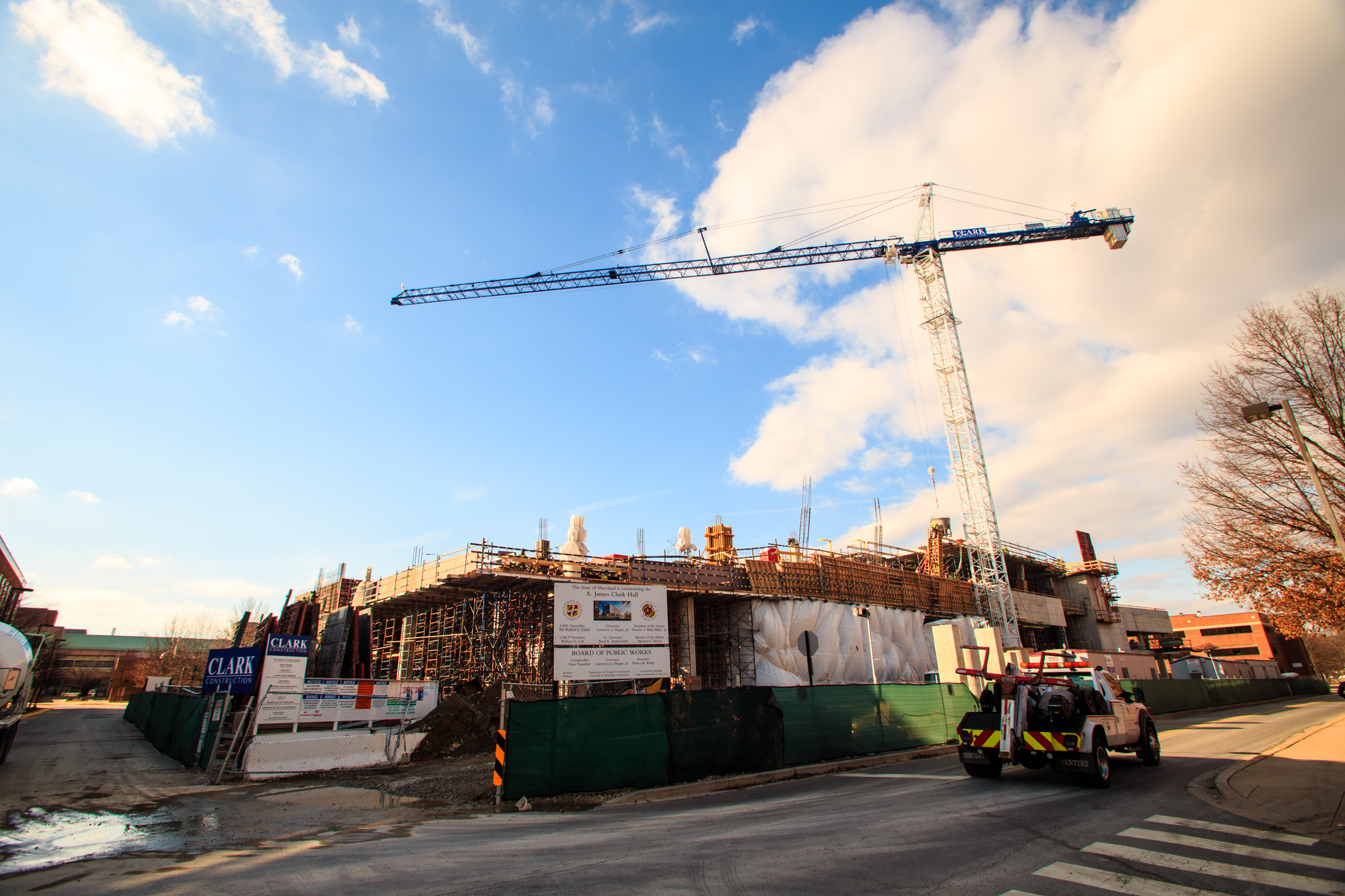Views expressed in opinion columns are the author’s own.
The University of Maryland’s campus is a patchwork of buildings, with modern glass infrastructure frequently emerging out of construction rubble to make the surrounding decades-old brick boxes look exceptionally sad. As the school updates itself to become, in the words of university President Wallace Loh, “a Silicon Valley,” the ailing state of many of its buildings represents a barrier to modernity. And it’s not just that those facilities are ignored with regard to PR — about a third of the buildings on this campus haven’t been renovated in more than 40 years.
[Read more: A third of UMD’s buildings haven’t been renovated in over 40 years]
It’s one of those problems that grows larger the longer it’s left alone. As of 2015, the estimated cost of addressing every issue on Facilities Management’s maintenance backlog was about $907 million, and there is no sign this university will direct any money toward closing that deficit.
Facilities Management was recently able to secure $10 million paid out over 12 years for deferred maintenance requests, but even that small amount had to be won through an extensive campaign to show administrators the poor condition of some parts of the campus. It’s clear building renovations aren’t at all a priority to this university.
Building new infrastructure and leaving the old to crumble until demolition is a dubious practice. It actively undermines this university’s goal to minimize its impact on the environment, and keeps us from pursuing more aggressive sustainability goals. Though this university is committed to green building design and operation, this environmentally conscious infrastructure is implemented only with the construction of new buildings or through major renovation of old ones.
When a third of our buildings are going completely unrenovated for decades, that diminishes the effectiveness of our Climate Action Plan. Instead of providing for less disruptive retrofits of parts of buildings, such as replacing pipes or adding better-fitted doors, this university will improve building sustainability only if it requires major construction.
Construction itself is disruptive, not just to the people on the campus but also to local waterways and wildlife. It’s unfortunate that this university continues to take on new projects when it could be working on expanding and improving the foundational infrastructure already present.
Moreover, it leads to poor conditions for students, faculty and staff. These facilities are still being used, continuing to wear down and fostering resentment in the community. As STEM majors get more dedicated buildings, labs and MakerSpaces, students in the behavioral and social sciences college have to deal with burst pipes and heating shutoffs.
[Read more: UMD’s Physics Welding Shop will become a new creative space for students]
And as this university seeks to retain its students in College Park and anchor a community of young urban professionals to the area, it should realize the inequity on the campus serving them. Students shouldn’t have to work in dilapidated buildings, and they shouldn’t have to live in dorms that suffer from the same problems. We end up paying exorbitant prices for subpar quality of life, so why wouldn’t we feel ready to move on from College Park as soon as we can?
While many dorms are slated for demolition and replacement, that doesn’t mean it’s okay to neglect their current residents. An increasing cost of living should be offset by increasing value to students, not mere vanity spending to improve the superficial image of the university.
It’s disappointing that the administration’s response to the concerns of this community is so frequently outright dismissal. It’s an indication that it’ll be a long time before building conditions on this campus meet the standards of comfort and sustainability we expect, and it’s up to us to be proactive and vocal about subpar living and working conditions. We won’t see large-scale change, but we can seek to resolve our individual problems with the spaces we’re given.
Sona Chaudhary, opinion editor, is a sophomore English and geology major. She can be reached at sonachaud@gmail.com.



